Guides • Perfecting your Craft
Posted on Nov 15, 2024
Man vs. Society: The Most Relatable Conflict in Literature
Martin Cavannagh
Head of Content at Reedsy, Martin has spent over eight years helping writers turn their ambitions into reality. As a voice in the indie publishing space, he has written for a number of outlets and spoken at conferences, including the 2024 Writers Summit at the London Book Fair.
View profile →In a Calvin and Hobbes comic strip where six-year-old Calvin shrugs off his bad behavior by saying he’s a victim of countless bad influences, he tells his father “I’m an innocent pawn! It’s society’s fault.” And while Calvin’s dad doesn’t buy that for a minute, many characters in literature face their biggest obstacles when they go against the grain and march to the beat of their own drums.
In this guide, I’m diving into the literary conflict of man vs. society to show you some of my favorite examples from books, films, and TV. And if you’re still interested, I’ll drop some great tips on incorporating this type of conflict into your writing.
What is man vs. society conflict?
Man vs. society conflict is a common type of conflict in literature that describes the fight between an individual and institutions, communities, or cultures. Often the engine behind social commentary in fiction, it frequently depicts individuals who are stifled or victimized by ‘the system’ and must push back against it.
Picture, for example:
- A private investigator uncovering the dark secrets of America’s largest bank
- A mother of three trying to break free from a fundamentalist cult
- A teenager forced to repeat senior year due to a misgraded SAT
Such examples all illustrate the clash between the individual and the collective.
How can we define ‘society’ for this type of conflict?
‘Society’ is a pretty nebulous concept. It’s hard to dramatize a conflict between a person and ‘all of society’ — so narratives tend to focus on a slice of the latter. For instance…
Society can be an institution
Let’s take the HBO series The Wire, which is about the never-ending struggle between the criminal gangs and police in Baltimore. In examining the social forces that continue channeling young men into drugs and crime, the show points its finger at the failure of specific institutions. The fourth season in particular casts its eye on the city’s education system and how, despite the best intentions of teachers and politicians, it’s set up in a way that disadvantages certain kids and creates a pipeline to crime, prison, and poverty.
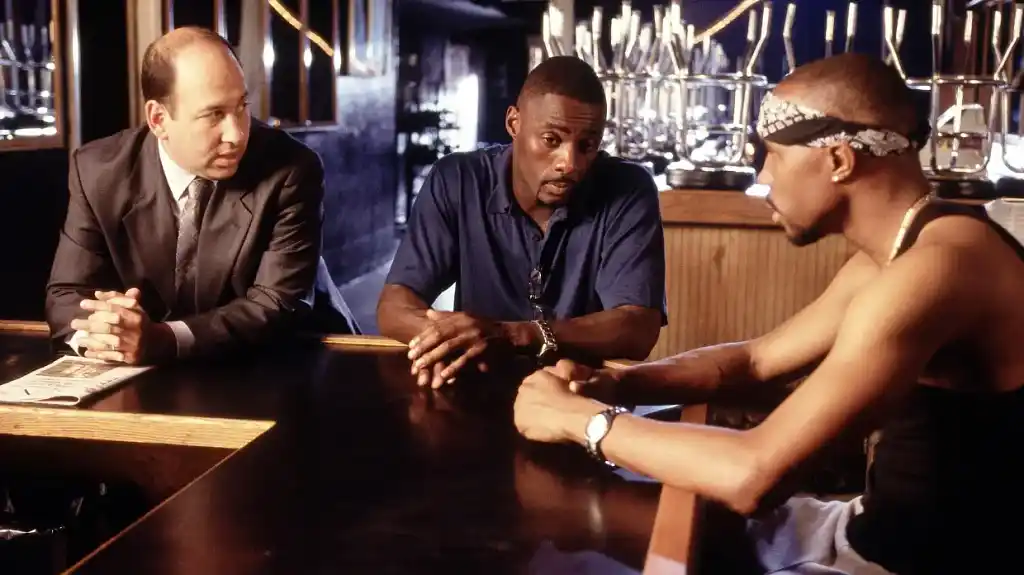
By focusing on this specific conflict between individual teens and the education system, the show is able to say something bigger about the failure of the City of Baltimore — and, by extension, American society at large.
Society can also be a small group of individuals
We can further extrapolate this idea of using institutions to represent “all of society.” In many stories, institutions and society are dramatized through individual characters. One of my favorite novels, for example, is Jonathan Coe’s What a Carve Up! in which a journalist writes a profile of the fictional aristocratic Winshaw family.
In each section, the journalist dives into a different Winshaw who has thrived in (and corrupted) a different part of British life of the 80s — from agriculture and banking to politics and the arts — and how those institutional failures have shattered his family. Ergo, within the context of this book, the Winshaws represent the collective cruelties of life in Thatcher’s Britain.
So whenever you’re looking at a story where one character is up against a group of any size, you should always ask yourself: “What does this group represent?” In many cases, I bet you’ll find that what they represent is society itself.
With this in mind, let’s look at some more David vs. Goliath stories (where ‘Goliath’ is society) from literature and popular culture.
Examples of man vs. society conflict
Katniss Everdeen vs. The Capital in The Hunger Games
In Suzanne Collins’s bestselling series, a resourceful young woman living in a post-apocalyptic America’s poorest region finds herself the star of a reality TV show where contestants must fight to the death. Like all good dystopian fiction, The Hunger Games holds the mirror up to show us the world in which we live. Society in this case is the Capital, and Katniss’ battle is against the myriad of ways that the Capital evilly functions: from using entertainment to placate the masses and influence political views to manipulating the underprivileged to turn against each other in order to distract from their own culpability.
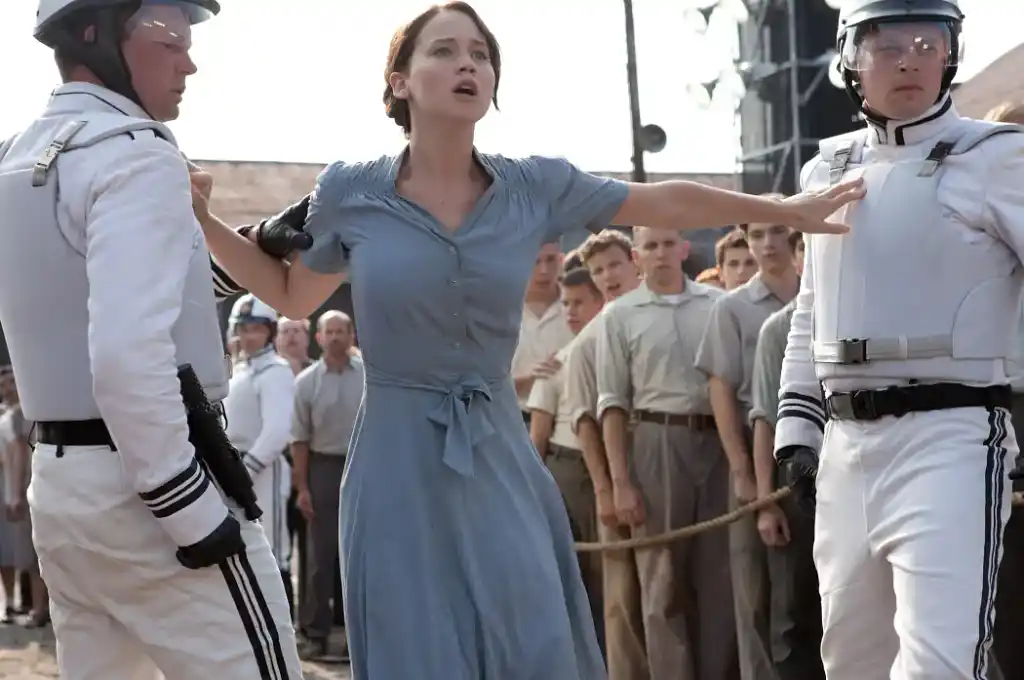
On an even more basic story level, the conflict in The Hunger Games is also a simple tale of a simple citizen fighting the system — and finding a way to win the day.
Billy Bean vs. Major League Baseball in Moneyball
In the early 2000s, the Oakland A’s general manager faced the tough challenge of building a winning team on a shoestring budget. With a payroll less than a third of what the New York Yankees had, GM Billy Beane leaned heavily on statisticians to identify undervalued players who could help the A’s make a historic push for the championship.
So while this may seem like a man vs. man story about sports teams duking it out, you could also easily view it through the lens of social inequity — more specifically, how those from less fortunate backgrounds are expected to compete against those born on third base (sports!).
Neo vs. The Matrix in The Matrix
Wake up, sheeple! The Matrix takes man vs. society to the next level — for now society is a giant computer that’s enslaved humanity, using humans as literal batteries in a simulation known as The Matrix. And of course, Neo, our hacker-protagonist who stumbles upon the secret of the world around him, will afterward choose to team up with a group of rebels dedicated to bringing down this cruel system.
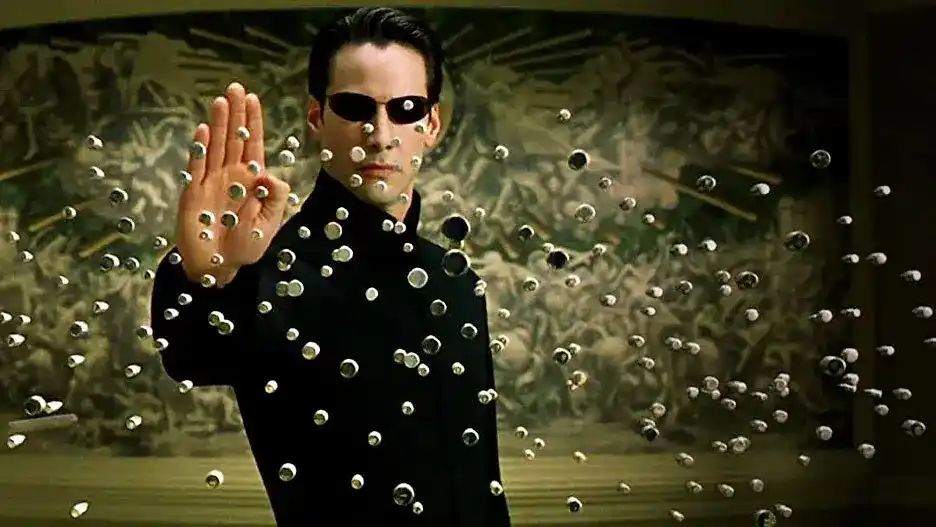
Here, the simulation is society, and The Matrix can be taken as an allegory for the way many people have given up their freedom in exchange for comfort and simplicity. (Another interpretation is that it represents an actual simulation in which we are all being literally held captive. Yikes!)
Ralph vs. The Mob in Lord of the Flies
William Golding’s infamous novel begins with a plane crash-landing on a deserted island. The group of surviving schoolboys initially organize by electing the charismatic Ralph as their leader. While Ralph focuses on uniting the group to build shelters and maintain order, his rival, Jack, breaks away with a group of choirboys and retreats into the forest to consolidate his power. Under Jack’s leadership, this splinter group becomes increasingly savage, with Jack using fear of an unseen 'beast' to tighten his grip on control. Eventually, their growing brutality drives them to violently challenge Ralph’s leadership.
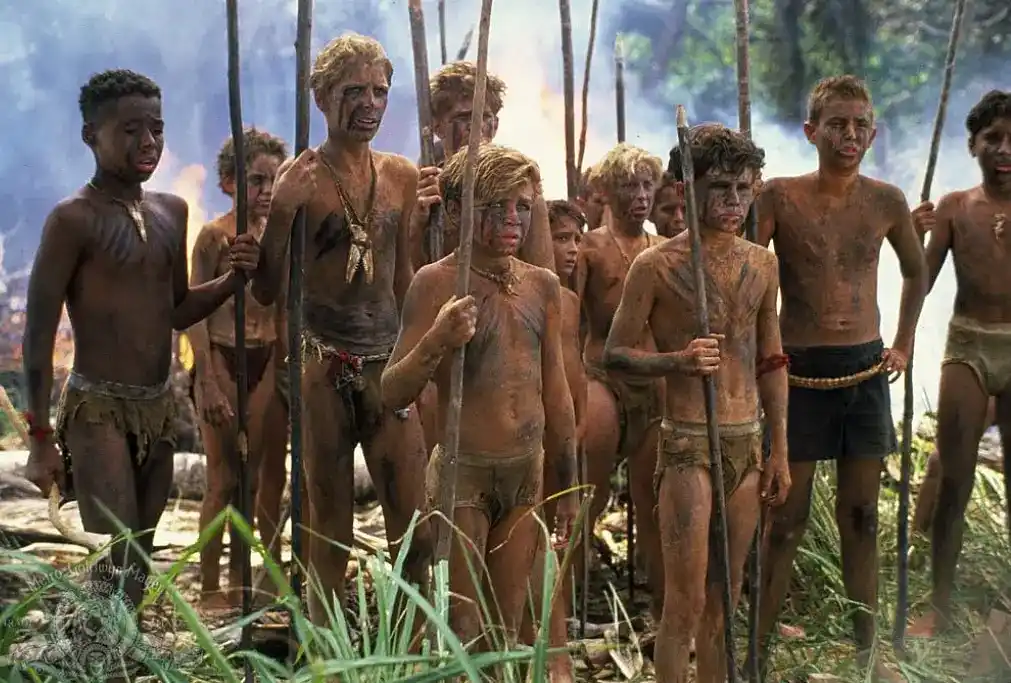
You could read the conflict here as man vs. man (or, more specifically, boy vs. boy). But you could also argue that Golding is criticizing the phenomenon of mob mentality in society, illustrating how even the most innocent people can commit horrific acts when caught up in group dynamics — particularly when driven by fear.
Charlotte vs. The Abattoir in Charlotte’s Web
Charlotte is a barn spider living on a farm. One day, she befriends Wilbur, a piglet runt destined for the slaughterhouse.
So what can a tiny spider do in the face of industrial agriculture to protect her newfound friend? Well, it’s simple: all she has to do is somehow turn her porcine friend into a celebrity too valuable to be killed. By devoting her life to saving wee Wilber, Charlotte is the very embodiment of raging against the machine that is an unfortunately carnivorous society.
3 tips for writing man vs. society
If you’re ready to tackle the conflict of man vs. society as a writer, then let me give you some tips that will keep your commentary focused in the right direction.
1) Personify society through a specific character
Since "society" is such a broad concept, you can make your narrative much more relatable and impactful if you personify it through a specific character or institution. For example, in One Flew Over the Cuckoo's Nest by Ken Kesey, the nurse Ratched symbolizes the dehumanizing and controlling aspects of institutional authority within a mental hospital. Her characterization as a tyrant helps readers connect with the protagonist’s rebellion against her cold, heartless rules — which would probably have been less effective if he were, say, battling random employees.
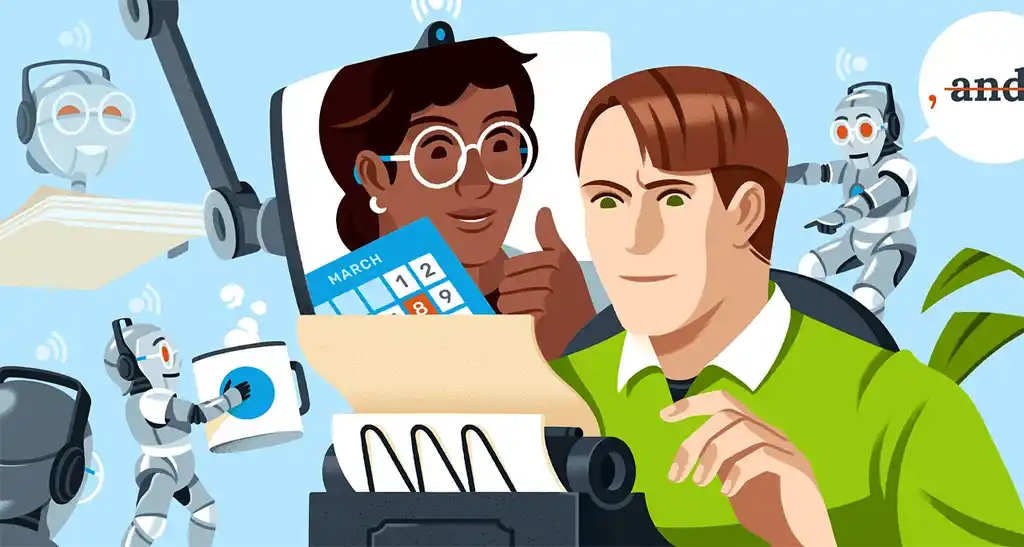
GET ACCOUNTABILITY
Meet writing coaches on Reedsy
Industry insiders can help you hone your craft, finish your draft, and get published.
2) Use setting to characterize society
Another powerful way to depict the concept of society — and its influence on your character — is through your setting. The environment in which your story takes place can embody the societal norms, values, and pressures that your protagonist is struggling against. A character fighting against “the regime” in a beautiful tropical paradise might not convey the same sense of struggle as one doing so in a bleak, soulless megacity, for instance. (Although subverting these expectations can lead to intriguing and original stories!)
Consider the World State city of London depicted in Aldous Huxley's Brave New World. This version of London is sterile, synthetic, and meticulously engineered — a society where children are grown in bottles and emotions are dulled with happiness-inducing soma pills. Such details effectively characterize the true nature of the World State: a ‘villain’ whose unwavering pursuit of stability and productivity comes at a great cost for the protagonist’s freedom and ultimate wellbeing.
3) Highlight the protagonist’s inner conflict
Everyone can relate to some form of conflict with society at large, but a story becomes truly compelling if you intertwine it with personal stakes. Let’s return to The Hunger Games: while Katniss Everdeen inherently opposes the oppressive rule of the Capitol and the brutal nature of the Games, it’s her personal choice to volunteer in place of her younger sister that truly raises the stakes leading to a profound inner conflict that highlights the moral dilemmas individuals face when confronting inhumane societal norms.
Man vs. society is a timeless and powerful conflict that continues to resonate in modern narratives. Now, let's shift our focus to what happens when a character's greatest antagonist is the natural world.

